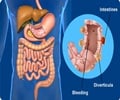How do blood vessels affect obesity treatment? The formation of blood vessels plays a crucial role in converting fat-storing cells to cells that release energy.

‘The formation of new blood vessels from pre-existing blood vessels that converts fat-storing cells into energy-releasing cells, may provide a possible gateway for treating obesity.’





Obesity primarily leads to alterations in adipose tissues, a type of connective tissue in the body that is associated with fat accumulation. Incidentally, there are two types of adipose tissues with distinct functions—white adipose tissue or WAT, which stores energy in the form of lipid droplets in the fat cells, and brown adipose tissue or BAT, which releases energy in the form of heat by lipid breakdown.As it turns out, these adipose tissues are extensively enveloped by blood vessels, which have diverse roles including supply of oxygen and nutrition to the adipose tissue, development of the tissue, and regulation of lipid metabolism.
Recently, these blood vessels and their association with adipose tissues have garnered much attention in connection with metabolic disorders.
The new review suggests that although both WAT and BAT are densely surrounded by blood vessels, BAT, in particular, is profusely vascularized because it executes highly demanding metabolic functions including thermogenesis or heat generation.
Probing the Role of Blood Vessels in Treating Obesity-Related Disorders
Apart from BAT, the browning of WAT (bWAT), in recent times, has also received attention because it may have implications for obesity-related disorders. Interestingly, vascularization—the formation of blood vessels from precursor cells—plays a crucial role in mediating the browning of WAT.An important factor in this regard is the vascular endothelial growth factor receptor 2 (VEGFR2), produced by the vascular endothelial cells that form the inner lining of blood vessels. This receptor, in turn, stimulates the release of signaling molecules like platelet-derived growth factors (PDGFs) from the endothelial cells. Consequently, PDGFs promote the maturation and browning of fat cells.
Advertisement
Indeed, angiogenesis is beginning to show promise in the therapeutic domain. However, the therapeutic implications are complex and multifactorial. While in certain contexts, stimulation of angiogenesis may help in treating obesity, in other cases its inhibition is helpful.
Advertisement
This comprehensive overview could help further research to develop drugs that target blood vessels as an effective treatment for metabolic diseases.
Source-Eurekalert















